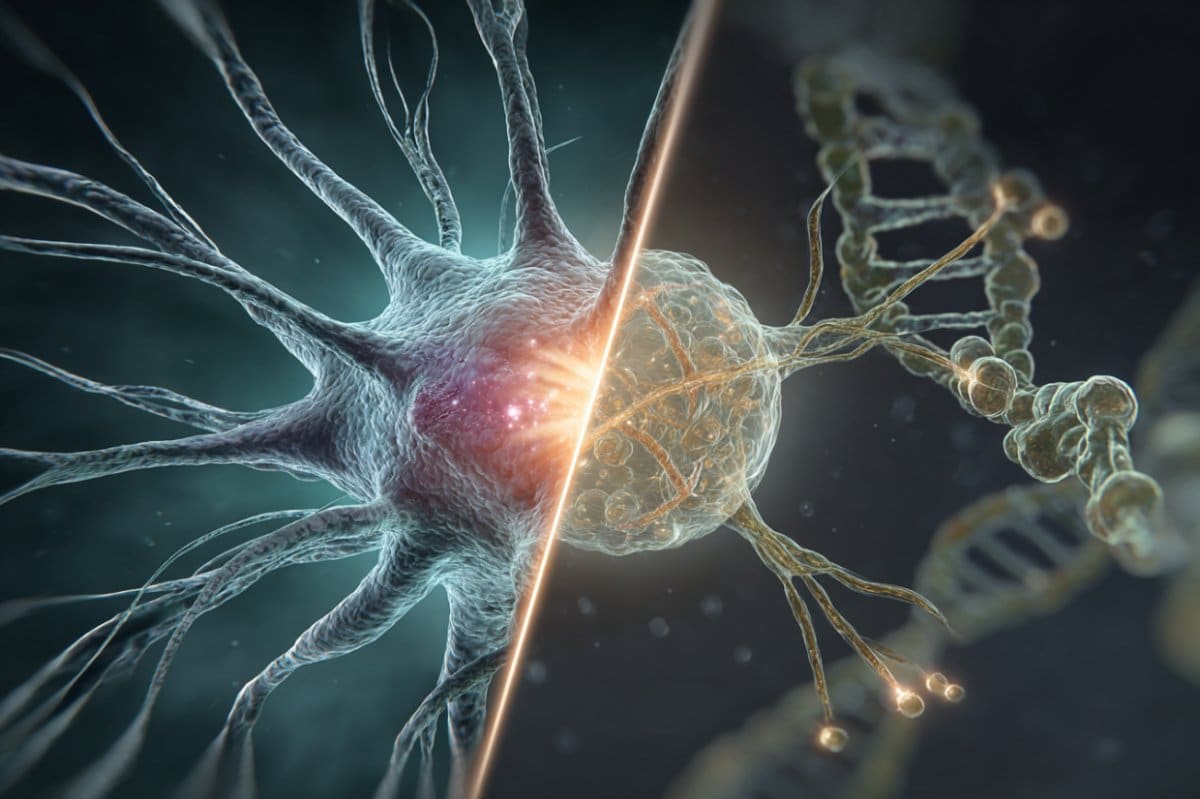Summary: New research reveals that autism and congenital heart disease may share a common biological basis—tiny cellular structures called cilia. Scientists found that mutations in genes affecting cilia formation disrupt both brain and heart development, helping explain why the two conditions often co-occur.
By identifying 45 genes that impair neuron growth and cilia function, the study opens doors for earlier detection of autism in newborns diagnosed with heart defects. These findings could transform screening strategies, allowing earlier intervention and improved outcomes for children at risk.
Key Facts:
- Cilia Connection: 45 genes linked to autism and heart disease affect cellular cilia, crucial for intercellular signaling.
- Early Clue: Congenital heart disease, detectable at birth, could indicate increased autism risk.
- Shared Gene Spotlight: TAOK1, among the genes identified, impairs both heart and brain development when mutated.
Source: Development
Autism spectrum disorders are complex neurodevelopmental conditions affecting about 1 in 100 children worldwide. Early diagnosis would allow timely intervention to improve the development and quality of life for children with autism.
Scientists have identified over 200 genes associated with autism, but predicting the risk of developing autism based on genetic information is not straightforward.

Autism can co-occur with congenital heart disease, which affects the structure, growth and function of the heart. Because congenital heart disease can be readily identified in newborns, a congenital heart disease diagnosis could help identify children at higher risk of developing autism earlier.
Scientists have been trying to understand why the two conditions, which affect the development of the brain and the heart respectively, occur together.
A team of scientists, led by Dr Helen Willsey from University of California, San Francisco, USA, discovered that tiny hair-like structures called cilia, found on the surface of almost every cell, underlie the shared biology of autism and congenital heart disease, taking us a step closer to early prediction of children at risk of developing autism.
This study is published in the journal Development on 24 June 2025.
‘Understanding how autism and congenital heart disease intersect biologically has been technically challenging just due to the sheer number of risk genes involved in both disorders,’ said Willsey.
Previous evidence had shown that mutations in 361 genes increased the risk of individuals developing either autism, congenital heart disease, or both. The scientists wondered whether genes linked to congenital heart disease that directly affect nerve cells may be genes that also increase the risk of autism.
‘Here, we looked at how these risk genes function in the development of both the brain and heart and contribute to disease,’ said Willsey.
Nia Teerikorpi, who performed most of the experiments in this study, grew immature human nerve cells that had been mutated to lack one of the 361 key genes in the lab and monitored how well the cells grew. She found 45 genes that affected the growth of the nerve cells.
Looking more closely, Teerikorpi and the team found that all 45 genes function in tiny hair-like protrusions (cilia) extending from our cells that are involved in movement, sensation and communication between cells.
Willsey explained why one gene in this group – taok1 – caught their attention: ‘Patients with mutations in the taok1 gene appear to have a higher risk of developing autism, and we previously identified taok1 as a predicted congenital heart disease risk gene, but we had not yet tested whether it functions in heart development. So, seeing this gene come up again in this work looking at the shared biology of the two conditions motivated us to study it more closely.’
To study the role of taok1 in the heart and brain, the team altered the gene in frog embryos and then monitored their growth and development. They found that cilia could not form properly on cell surfaces, and they observed defects developing in the heart and brain. This suggests that the other 44 genes identified could also be relevant for the development of the brain and heart, contributing to autism and congenital heart disease.
Building on this work, the team is now actively pursuing the extent to which genes involved in cilia overlap with genes associated with autism and congenital heart disease, ‘what we discovered is the tip of the iceberg for the intersection of autism and congenital heart disease,’ said Willsey, ‘Our findings offer the opportunity to prioritize people with genes associated with both conditions for early monitoring and intervention.’
About this genetics, ASD, and heart disease research news
Author: Joyce Yu
Source: Development
Contact: Joyce Yu – Development
Image: The image is credited to Neuroscience News
Original Research: Open access.
“Ciliary biology intersects autism and congenital heart disease” by Helen Rankin Willsey et al. Development
Abstract
Ciliary biology intersects autism and congenital heart disease
Autism spectrum disorder (ASD) and congenital heart disease (CHD) frequently co-occur, yet the underlying molecular mechanisms of this comorbidity remain unknown.
Given that children with CHD are identified as newborns, understanding which CHD variants are associated with autism could help select individuals for early intervention.
Autism gene perturbations commonly dysregulate neural progenitor cell (NPC) biology, so we hypothesized that CHD genes disrupting neurogenesis are more likely to increase ASD risk.
Therefore, we performed an in vitro pooled CRISPR interference screen to identify CHD genes disrupting NPC biology and identified 45 CHD genes.
A cluster of ASD and CHD genes are enriched for ciliary biology, and perturbing any one of seven such genes (CEP290, CHD4, KMT2E, NSD1, OFD1, RFX3 and TAOK1) impairs primary cilia formation in vitro.
In vivo investigation of TAOK1 in Xenopus tropicalis reveals a role in motile cilia formation and heart development, supporting its prediction as a CHD gene.
Together, our findings highlight a set of CHD genes that may carry risk for ASD and underscore the role of cilia in shared ASD and CHD biology.






